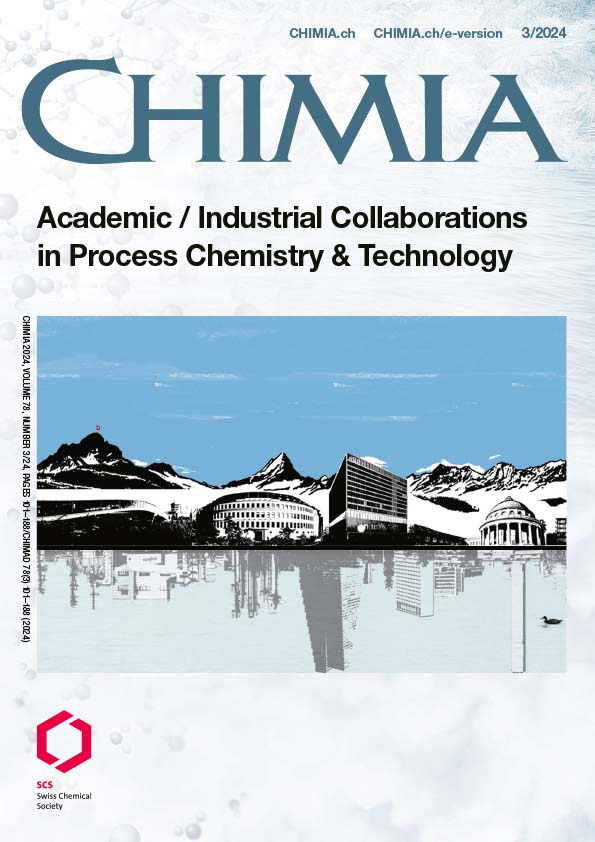Operando Nuclear Magnetic Resonance (NMR) Studies of a Trickle-bed Reactor Using D-T2 Correlations
DOI:
https://doi.org/10.2533/chimia.2024.129PMID:
38547014Keywords:
In situ measurement, Nuclear magnetic resonance, NMR correlations, Trickle bed reactorAbstract
Catalytic conversions in fine-chemical and pharmaceutical production are increasingly performed in trickle-bed rectors. Optimisation of these processes is usually based on end of pipe measurement made at specific residence times. This process is both time-consuming and the data sometimes challenging to interpret. In the present work, operando nuclear magnetic resonance (NMR) techniques both at the scale of the whole bed (global) and spatially resolved within the bed (local) are used to gain new insights into the catalytic conversion process under reaction conditions. Spatially resolved spectroscopic and diffusion-T2-relaxation (D-T2) methods interrogate local differences in chemical conversion and selectivity, and mass transport (molecular self-diffusion) respectively, thereby providing valuable information for process simulation models. This capability is demonstrated using the continuous flow three phase (gas-liquid-solid) hydrogenation of benzonitrile over a fixed bed of 0.5 wt% Pd/Al2O3 catalyst pellets yielding toluene and benzylamine. Global 1H spectroscopic and D-T2 were used to monitor chemical conversion and the approach to steady state; these were subsequently followed by spatially resolved 1H spectra and spatially resolved D-T2 correlations to examine the local differences in axial conversion and selectivity of the catalyst bed packing. At steady-state a global conversion of 63% was achieved with 65% and 25% selectivity to benzylamine and toluene respectively. Heterogeneities in the local (axial) conversion and selectivity differed by 31% along the total catalyst bed length. These techniques should be applicable to many three-phase heterogeneous catalytic systems provided that the T2 relaxation time of the reactants and products is not prohibitively small.
Funding data
-
Engineering and Physical Sciences Research Council
Grant numbers EP/S513775/1
Grant numbers EP/S513775/1
Downloads
Additional Files
Published
How to Cite
Issue
Section
License
Copyright (c) 2024 Amy Sparks, Lynn Gladden, Colin Brennan, Mick Mantle

This work is licensed under a Creative Commons Attribution 4.0 International License.







